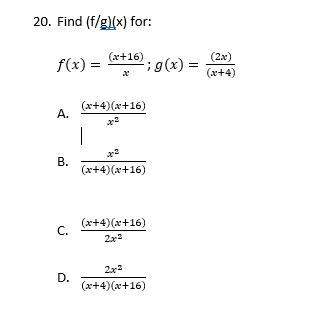
Mathematics, 26.07.2019 16:00, girlydiy17
3. a city has a population of 23,000 in 2005, 27,600 in 2006, 33,120 in 2007, and 39,744 in 2008. if this pattern continues, what will be the population in 2012? a. write the iterative rule for the arithmetic or geometric sequence. b. answer the question and show all work.

Answers: 2
Other questions on the subject: Mathematics


Mathematics, 21.06.2019 18:00, carnations
Does anyone know how to do geometryme with this problem
Answers: 1

Mathematics, 21.06.2019 19:30, tiwaribianca475
Cor d? ? me ? max recorded the heights of 500 male humans. he found that the heights were normally distributed around a mean of 177 centimeters. which statements about max’s data must be true? a) the median of max’s data is 250 b) more than half of the data points max recorded were 177 centimeters. c) a data point chosen at random is as likely to be above the mean as it is to be below the mean. d) every height within three standard deviations of the mean is equally likely to be chosen if a data point is selected at random.
Answers: 1

Mathematics, 21.06.2019 21:00, davidcortez27
Need match the functions with correct transformation. f(x) = -3x f(x) = |x-1|+3 f(x) = √(x+3) 1/2x² f(x) = (x+1)²-3 4|x| 1. compress by a factor of 1/2 2. stretch by a factor of 4 3. shift to the left 3 4. shift to the left 1 5. shift up 3 6. reflection
Answers: 1
Do you know the correct answer?
3. a city has a population of 23,000 in 2005, 27,600 in 2006, 33,120 in 2007, and 39,744 in 2008. if...
Questions in other subjects:

Physics, 16.10.2020 17:01


Engineering, 16.10.2020 17:01


Mathematics, 16.10.2020 17:01

Mathematics, 16.10.2020 17:01



History, 16.10.2020 17:01

Mathematics, 16.10.2020 17:01


 =
=  * 1.2^n-1
* 1.2^n-1




